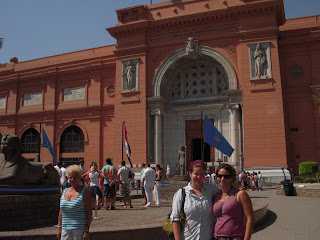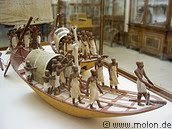


After Egypt, Kenya was a breath of fresh air . . . both literally and figuratively. The people here are so nice and genuinely welcoming. I'm not sure exactly what I was expecting, but I was expecting that it would be completely different than anywhere else that I have traveled before. Instead, I have been surprised by the similarities. Other than the obvious and expected differences--the skin color of most of its residents--it is very similar to many other towns I've visited in South America. Yes, there is some poverty in places, but there is also some wealth and lots of industry. One of our first days in Nairobi, we were directed to a mall to buy groceries and hit the ATM.
Some truly awesome differences are that you don’t get cat-called every time you walk down the street, taxi drivers don’t think that honking at you a bajillion times somehow increases the odds that you would take a cab instead of walking, and, for the most part, everyone speaks English.
Our first week in Kenya was spent on a safari of the Maasai Mara and Lake Nakuru. We got there at the prime time too, while all of the animals were migrating to Kenya from the Serengeti in Tanzania. We were told that if we had arrived a few weeks earlier or later, there would only have been 1/3 or less of the animals that were there during our visit.
There were animals EVERYWHERE! By the last day, we were completely jaded, “Oh, another lion. That’s cool.”
On the first night, we got to our cabins in the late afternoon and did an evening game drive. Even in the space of that two-hour drive, we saw hundreds, if not thousands, of wildebeests, Thomson gazelles, Zebra,
 impalas, and African Cape buffalo.
impalas, and African Cape buffalo.  We also saw guinea fowl, ostriches, lions, maasai giraffe,
We also saw guinea fowl, ostriches, lions, maasai giraffe,  elephants,
elephants,  huge storks,
huge storks,  and vultures.
and vultures.  We couldn’t believe it when John, our awesome guide from Mt. Kenya Tours, promised that we would see many more animals the next day. We had already gotten our money’s worth, and we still had two days to go.
We couldn’t believe it when John, our awesome guide from Mt. Kenya Tours, promised that we would see many more animals the next day. We had already gotten our money’s worth, and we still had two days to go.The next day was incredible. In addition to seeing everything that we had seen the day before, including a ton more lions (and their cubs),

 we also saw a cheetah (very briefly),
we also saw a cheetah (very briefly),  jackals, hippos,
jackals, hippos, eagles with a fresh kill,
eagles with a fresh kill,  foxes, Topi, pik-piks (sp?), warthogs, secretary birds, hartebeast, red bucks, crocodiles, and the suberb starlings.
foxes, Topi, pik-piks (sp?), warthogs, secretary birds, hartebeast, red bucks, crocodiles, and the suberb starlings.During one truly amazing encounter, we were sitting directly between the lion and his six cubs that were gnawing away at their freshly slaughtered wildebeest. We also saw a lot of this . . . .
Apparently lions mate 25 times a day!
John was also able to get us very close, although only briefly, to a cheetah and an ostrich nest.
The next morning, we did an early morning game drive to see if we could see the big cats in action. It was unbelieveable. At one point I was hanging out of a van taking pictures less than 20 feet away from a lion and lioness. I kept fluctuating between feeling thrilled, terrified, and maybe a bit guilty (it can’t be great for all of these animals to be so used to humans).
We also got to see a lion hunt, though, unsuccessfully. (video to be added later). Our guide told us that the lioness is actually a much better hunter than the male lions. Maybe they need to make a new disney movie, The Lion Queen.
Now I’m sorry to disappoint all you Lion King fans, but there were no baboons holding up any of the cubs. And, although we saw plenty of warthogs, we never saw any hanging out with any meercats (sp?).
At Lake Nakuru, the next day, we saw Vervet Monkeys as we drove into the park and as we waited at the gate, one hopped into our van long enough to steal the guide's banana. Although Masaai Mara and Lake Nakuru are very close in distance, the landscape was vastly different. Except for the Acacia trees that define Kenya's landscape, Masaai Mara could have been any desert plain. There were few water features, large distances between trees, and tall grasses. It was very brown. Lake Nakuru is a park surrounding huge lake and, as such, was very green. Outside of the wetlands surrounding the Lake, there are dense thickets of trees everywhere.
It was very strange to see so many of the same animals from Masaai Mara in this environment. I'm not sure why, but I have always pictured giraffe, rhinos, lions, etc., as living in landscapes like those present in Masaai Mara. In Lake Nakuru, we saw one black rhino from a distance and many white rhinos (we were now 4 for 5 of the Big Five, only missing the elusive leopard) in addition to thousands of flamingos, many Nakuru baboons, more lions, more zebra, the Rothchild giraffe, some rock hyrax, hyenas, and the colorful agama lizard and inaptly named gross starlings.
The highlight for me, though, was when we saw a lion near a fresh kill being chased off by a herd of buffalo. The buffalo, smelling the blood, all starting moving towards the lion. After the lion was pushed off to a safe distance, the buffalo also chased off the hyena and jackals that had been circling the area waiting for the lion to tire of his kill. The buffalo also helped a warthog mom and baby excape from the hyenas. I was amazed that the lion was scared of the buffalo, but apparently they move in herds and will work together to kill a lion that it deems a threat to their herd.














































